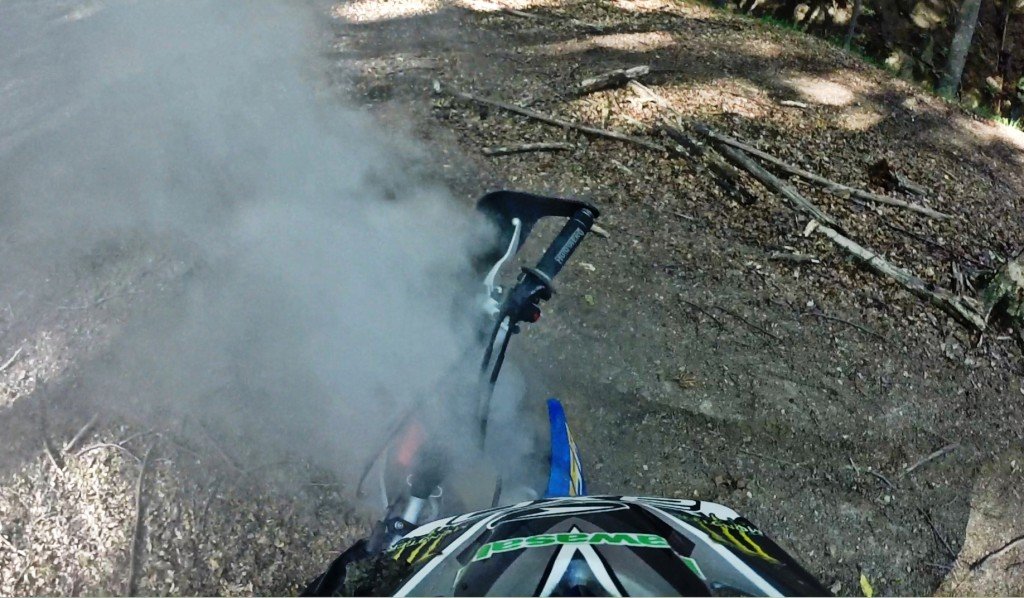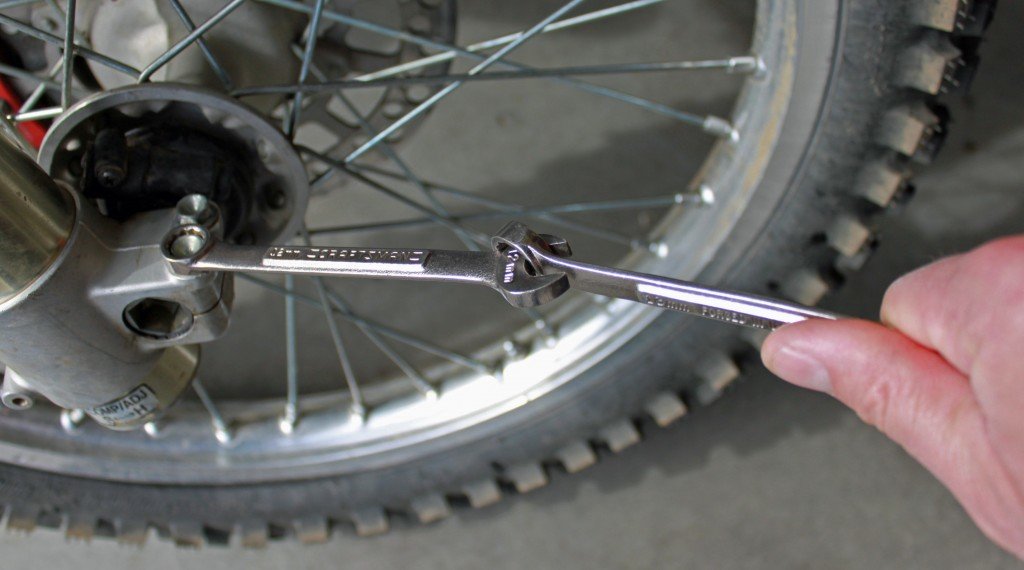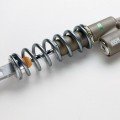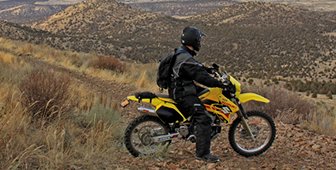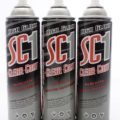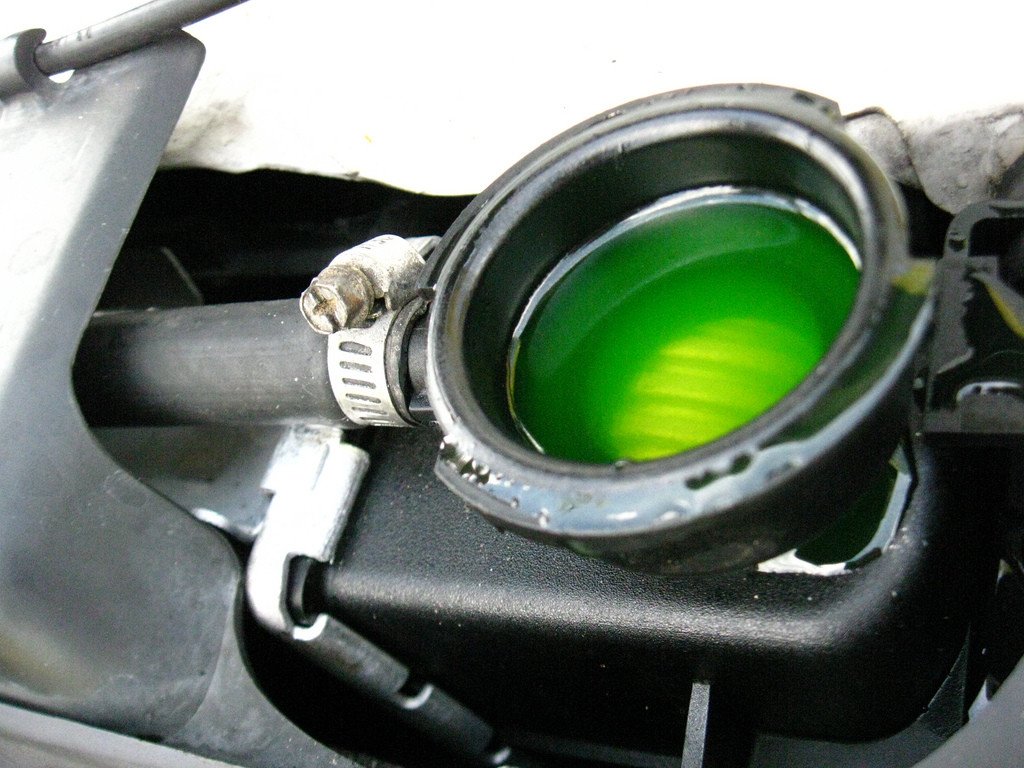 Good morning boys and girls! Welcome to DSA’s coolant class, where we explore the exciting world of motorcycle engine coolant by combining frivolous technical jargon with rudimentary mathematics. Let’s dive right in with a word problem, shall we?
If Johnny spends $735 on a 26 year-old Honda XR250 and then rides 5 miles to the store to purchase (2) 64 fl oz bottles of antifreeze at $11.40/each to flush his bike’s cooling system, what is Johnny’s IQ level?
Answer: <50. Johnny is a moron because his Honda XR is air-cooled only. He needs canned air, not coolant.
XRs aside, many dual sport motorcycles do have liquid cooling systems, which, besides brake fluid, is one of the most often neglected fluids to be serviced regularly. Before we get into why it’s important to check your coolant on a regular basis, let’s examine the contrastive chemical components comprising coolant in comparison to average everyday antifreeze.
In long-winded elaborate scientific terms: coolant is antifreeze that has water mixed in.
Water alone has long been used as a fail safe and reliable medium for heat transfer (see: Fukushima Nuclear Power Plant). But straight water in an engine’s cooling system will not maintain the crucial temperature balance to allow for optimum performance.
On its own, water has a boiling point of 212 degrees and a freezing point of 32 degrees Fahrenheit, at least here in America anyway. If you live in some communist country, you’re forced to say it freezes at 0 and boils at 100 (waaaay too confusing).
Either way by mixing in antifreeze, the boiling point of water is substantially increased and, as implied, the freezing point is drastically lowered. This allows the engine’s cooling system to provide optimum operating temperatures that are often referred to in lab studies as Goldilocks Ideal – not too hot, not too cold. And yes, I did just make that up.
Antifreeze also helps to prevent water from doing what it does best to metal – corrode it. For a while anyway. Leave coolant in your bike for too long and the antifreeze becomes a liability in and of itself.
Most antifreeze has similar base fluids: either ethylene glycol or propylene glycol. A small percentage of other ingredients such as dye, antifoam agents, and corrosion inhibitors (typically oxides like silicates, phosphates, and borates) help complete the recipe to manufacturer specifications. On its own, antifreeze has a shelf life of somewhere between much longer than you and forever, but the moment it’s mixed with water and put in a cooling system it begins the degradation process.
Good morning boys and girls! Welcome to DSA’s coolant class, where we explore the exciting world of motorcycle engine coolant by combining frivolous technical jargon with rudimentary mathematics. Let’s dive right in with a word problem, shall we?
If Johnny spends $735 on a 26 year-old Honda XR250 and then rides 5 miles to the store to purchase (2) 64 fl oz bottles of antifreeze at $11.40/each to flush his bike’s cooling system, what is Johnny’s IQ level?
Answer: <50. Johnny is a moron because his Honda XR is air-cooled only. He needs canned air, not coolant.
XRs aside, many dual sport motorcycles do have liquid cooling systems, which, besides brake fluid, is one of the most often neglected fluids to be serviced regularly. Before we get into why it’s important to check your coolant on a regular basis, let’s examine the contrastive chemical components comprising coolant in comparison to average everyday antifreeze.
In long-winded elaborate scientific terms: coolant is antifreeze that has water mixed in.
Water alone has long been used as a fail safe and reliable medium for heat transfer (see: Fukushima Nuclear Power Plant). But straight water in an engine’s cooling system will not maintain the crucial temperature balance to allow for optimum performance.
On its own, water has a boiling point of 212 degrees and a freezing point of 32 degrees Fahrenheit, at least here in America anyway. If you live in some communist country, you’re forced to say it freezes at 0 and boils at 100 (waaaay too confusing).
Either way by mixing in antifreeze, the boiling point of water is substantially increased and, as implied, the freezing point is drastically lowered. This allows the engine’s cooling system to provide optimum operating temperatures that are often referred to in lab studies as Goldilocks Ideal – not too hot, not too cold. And yes, I did just make that up.
Antifreeze also helps to prevent water from doing what it does best to metal – corrode it. For a while anyway. Leave coolant in your bike for too long and the antifreeze becomes a liability in and of itself.
Most antifreeze has similar base fluids: either ethylene glycol or propylene glycol. A small percentage of other ingredients such as dye, antifoam agents, and corrosion inhibitors (typically oxides like silicates, phosphates, and borates) help complete the recipe to manufacturer specifications. On its own, antifreeze has a shelf life of somewhere between much longer than you and forever, but the moment it’s mixed with water and put in a cooling system it begins the degradation process.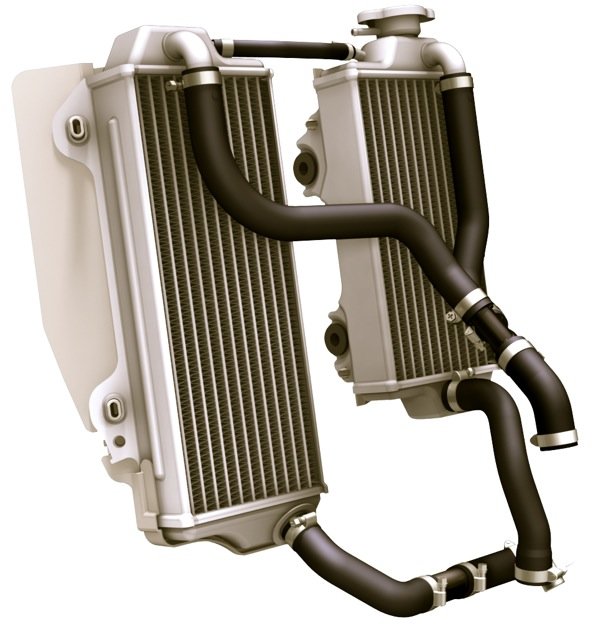 One reason is the water it’s mixed with. If you’re mixing antifreeze with Bangladesh sewage canal water, there’s a good chance that your coolant’s life expectancy (and your own) will be greatly reduced. Using distilled water eliminates the chance that minerals (and biohazards) within the water will react adversely with the inhibitors and cause internal scale to form, resulting in heat transfer loss and accelerated corrosion.
Someone once said that time heals all wounds, a lovely sentiment that was directly refuted by the guy who said time is the surest of poisons. While mixing antifreeze with something as pure as distilled water, Norwegian glacial runoff, or Mother Teresa’s tears will help to slow the degradation process, it’s not the fountain of youth. Coolants degrade over time anyway and break down into acids. Degradation occurs more quickly in engines operating at higher temperatures, which means that every time you run flat-out for long stretches you’re accelerating more than just the bike. Not a concern for fresh coolant, but a liability for those that neglect preventative maintenance.
Testing the PH level of your coolant should be part of every rider’s essential annual service to their bike. When coolant degrades the PH level increases. Most basic el cheapo antifreeze/coolant testers only measure glycol water ratio and determine level of freeze protection. That’s great for checking to see if your coolant will hold up while sight-seeing in the arctic during the winter months, but it doesn’t measure PH and won’t necessarily indicate whether coolant is beginning to break down. But there are quick and easy ways to check the PH level of your bike’s coolant.
One reason is the water it’s mixed with. If you’re mixing antifreeze with Bangladesh sewage canal water, there’s a good chance that your coolant’s life expectancy (and your own) will be greatly reduced. Using distilled water eliminates the chance that minerals (and biohazards) within the water will react adversely with the inhibitors and cause internal scale to form, resulting in heat transfer loss and accelerated corrosion.
Someone once said that time heals all wounds, a lovely sentiment that was directly refuted by the guy who said time is the surest of poisons. While mixing antifreeze with something as pure as distilled water, Norwegian glacial runoff, or Mother Teresa’s tears will help to slow the degradation process, it’s not the fountain of youth. Coolants degrade over time anyway and break down into acids. Degradation occurs more quickly in engines operating at higher temperatures, which means that every time you run flat-out for long stretches you’re accelerating more than just the bike. Not a concern for fresh coolant, but a liability for those that neglect preventative maintenance.
Testing the PH level of your coolant should be part of every rider’s essential annual service to their bike. When coolant degrades the PH level increases. Most basic el cheapo antifreeze/coolant testers only measure glycol water ratio and determine level of freeze protection. That’s great for checking to see if your coolant will hold up while sight-seeing in the arctic during the winter months, but it doesn’t measure PH and won’t necessarily indicate whether coolant is beginning to break down. But there are quick and easy ways to check the PH level of your bike’s coolant.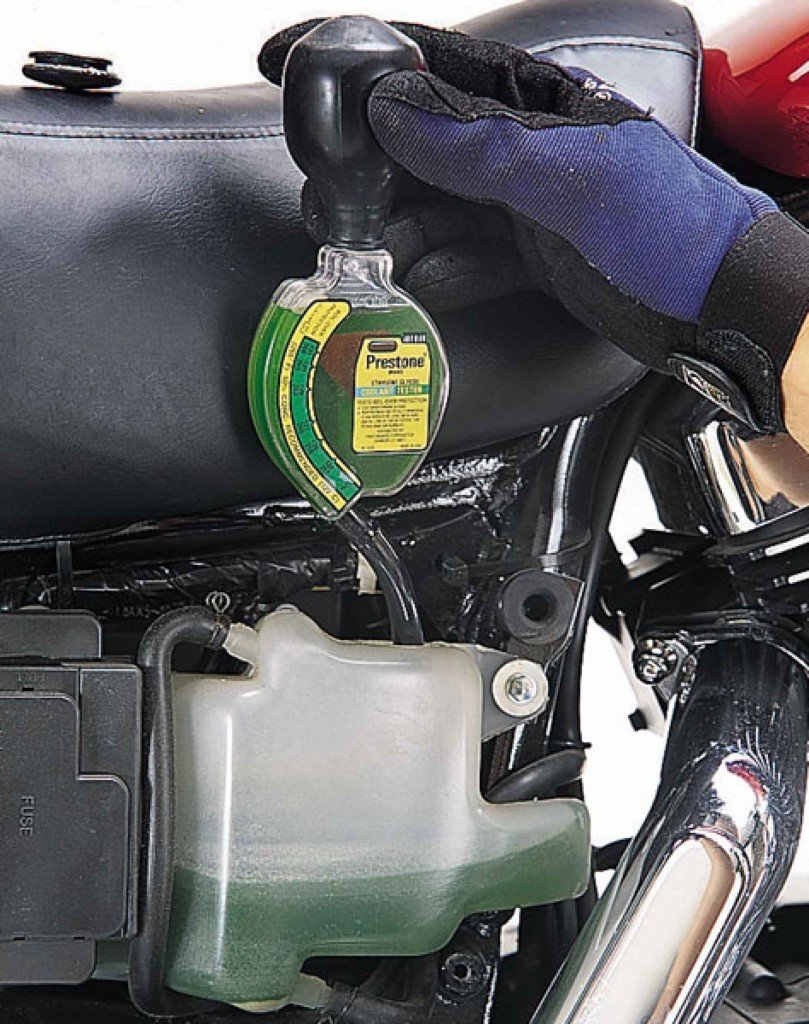 One is to buy test strips at your local auto parts store. By dipping a strip into your coolant it will indicate whether the coolant PH level is satisfactory and tell you if your radiator is pregnant or not.
Another great way to test the PH level of your coolant is to use an ordinary multimeter. It’s quick and easy and anyone who’s even slightly DIY inclined should have one of these in their toolbox anyway. If you don’t have one, run to Chinese Tools (AKA Harbor Freight) and cough up the $5 to get one. It’ll probably come with a free flashlight – which will break immediately and then you can use the multimeter to troubleshoot what’s wrong with it.
One is to buy test strips at your local auto parts store. By dipping a strip into your coolant it will indicate whether the coolant PH level is satisfactory and tell you if your radiator is pregnant or not.
Another great way to test the PH level of your coolant is to use an ordinary multimeter. It’s quick and easy and anyone who’s even slightly DIY inclined should have one of these in their toolbox anyway. If you don’t have one, run to Chinese Tools (AKA Harbor Freight) and cough up the $5 to get one. It’ll probably come with a free flashlight – which will break immediately and then you can use the multimeter to troubleshoot what’s wrong with it.
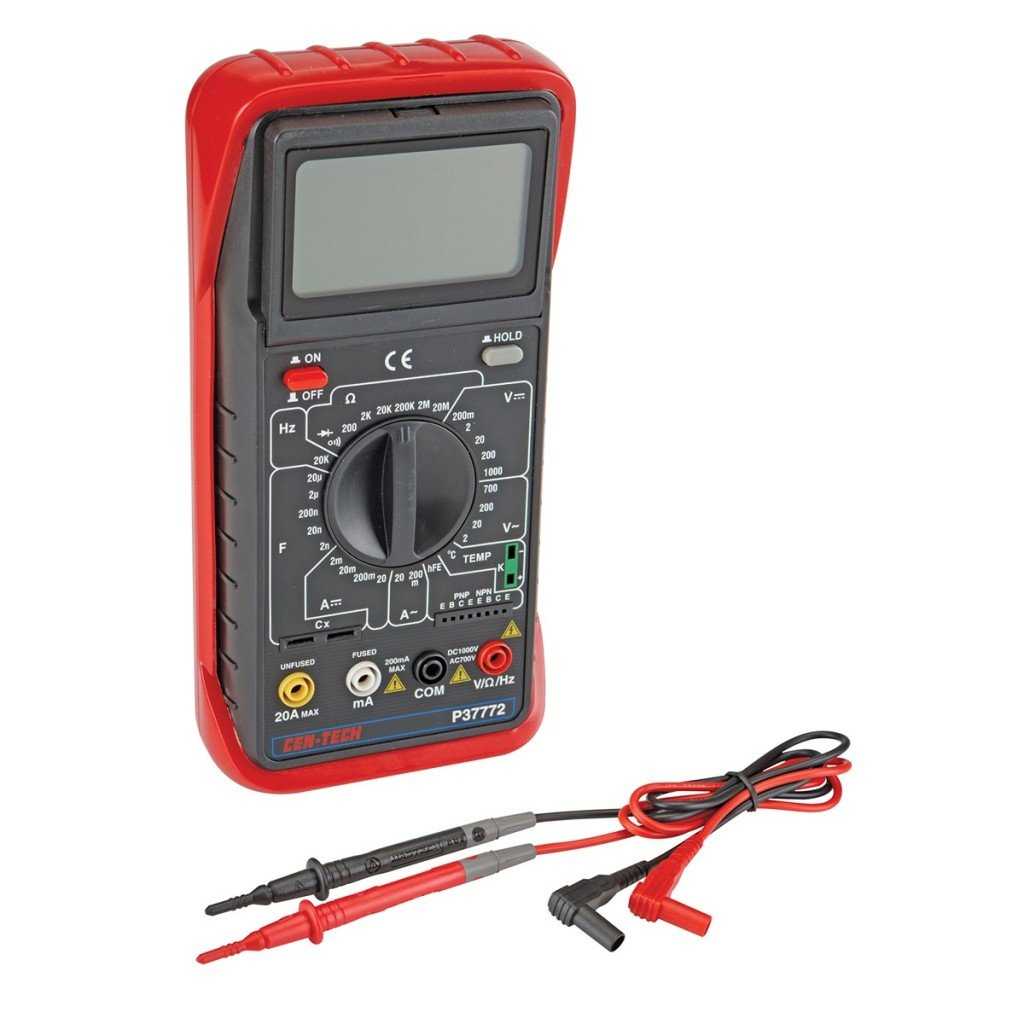 Here’s a step by step guide to the process of checking coolant PH with a multimeter:
Step 1: Find where you last put the multimeter.
Step 2: Realize batteries are dead on multimeter and quietly switch them with your kid’s video game controller batteries.
Step 3: Remove radiator cap. (turn cap, not bike)
Step 4: Set multimeter to 20DC voltage
Step 5: Touch positive lead to engine ground.
Step 6: Place negative lead into coolant.
Step 7: Read multimeter. 0.01 – 0.05 indicates good PH level. 0.05 – 0.07 indicates you should start thinking about changing your coolant before the next lunar eclipse. Above 0.07 means you’re a slacker and should’ve changed it already.
The entire testing process only takes a couple of minutes, unless you’re dim-witted Johnny who’s now disassembled half his XR looking for the radiator.
Since no Antifreeze manufacturers sponsor this website, I can’t (unfortunately) shamelessly plug a brand name antifreeze to replace coolant that needs to be changed. But I can offer the following tips:
Here’s a step by step guide to the process of checking coolant PH with a multimeter:
Step 1: Find where you last put the multimeter.
Step 2: Realize batteries are dead on multimeter and quietly switch them with your kid’s video game controller batteries.
Step 3: Remove radiator cap. (turn cap, not bike)
Step 4: Set multimeter to 20DC voltage
Step 5: Touch positive lead to engine ground.
Step 6: Place negative lead into coolant.
Step 7: Read multimeter. 0.01 – 0.05 indicates good PH level. 0.05 – 0.07 indicates you should start thinking about changing your coolant before the next lunar eclipse. Above 0.07 means you’re a slacker and should’ve changed it already.
The entire testing process only takes a couple of minutes, unless you’re dim-witted Johnny who’s now disassembled half his XR looking for the radiator.
Since no Antifreeze manufacturers sponsor this website, I can’t (unfortunately) shamelessly plug a brand name antifreeze to replace coolant that needs to be changed. But I can offer the following tips:
- Don’t be cheap. Your bike doesn’t have the coolant capacity of a Kenworth 18 wheeler so splurge on a decent brand of powersport specific antifreeze or premixed coolant, it’s not going to cost you much anyway.
- You can mix (reputable) brands of antifreeze but not the base types of antifreeze. Propylene glycol should never be mixed with ethylene glycol. Manufacturers have simplified this – don’t mix different colored coolants! If you’re color blind have a preschooler help you, just don’t let them drink too much of it.
- Coolant cannot protect surfaces it doesn’t contact and glycol water vapors can be extremely corrosive – once you’ve changed your coolant run the bike for a while and top it off. Check the coolant level in the radiator after the next few rides, the expansion tank (if applicable) doesn’t always provide a reliable indication of fluid level.
